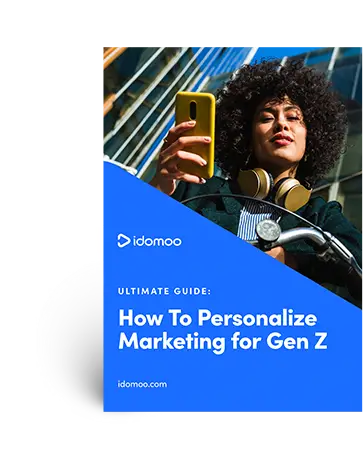Ambitious, empowered and predicted to be the largest generation in history by 2025 — Generation Alpha is already catching the attention of brands.
Just take a look at Nike, who collaborated with popular gaming platform Fortnite to reach today’s tweens. Or Mattel, who launched a line of Barbies made from recycled plastics in hopes of winning over this environmentally conscious generation.
Don’t let their young age fool you. While the Alphas have only just hit tweendom, their voice is loud and their ideas are big. Brands must choose to listen — or risk fading into irrelevance.
What makes this generation unique compared to previous generations? How can businesses begin to build brand affinity with these mini millennials? Keep reading to find out.
Who Is Generation Alpha?
Generation Alpha includes all children born in or after 2010, and they’ve earned quite a few nicknames, including Gen A, Generation Glass and Upagers. Whatever you choose to call them, you need to know the following.
- Millennial parents offer key insight into their buying behavior. We can look to Gen Alpha’s parents to determine what and where they’re buying — 87% of parents say their children influence their purchase decisions.
- They’re more empowered than any other generation. Unlimited access to information gives this generation unprecedented awareness into social issues and the resources to fight them.
- They’re shaped by technology. As the first generation born entirely in the 21st century, Gen Z has advanced, smarter technology at their fingertips. It’s everywhere, from education to social interactions and beyond. Statistics show 65% of children ages 8 to 11 either own or have access to a smartphone at home.
How To Market to Generation Alpha
Speaking Generation Alpha’s language is no small feat. As digital natives, these consumers are growing up alongside rapid advancements in technology — and your communications must be up-to-date with the digital world they’re accustomed to.
But a digital-first approach won’t be enough. Your messaging must also resonate with this generation’s values. Are you committed to social causes? Are you pushing products — or inviting consumers to take part in the conversation? We dig into these and other best practices your brand should follow.
Speak Their Language: Video
For Gen Alpha, visual communication takes center stage. This generation has digital devices fully integrated into their daily lives, making video a powerful tool for marketers looking to connect with them. Not only does it keep them engaged, but it’s also great for effectively getting your point across since it’s audiovisual. (Remember that this is the way people have been communicating for thousands of years.)
For instance, we’ve worked with schools to help explain test scores to their students via Personalised Video. And, while the oldest Alphas have a few years to go before they move on to higher education, colleges also need to start thinking about this rising generation.
This financial aid explainer by the University of Dayton is a good example of how video can be used to communicate important information and connect better with younger generations, including Gen Alpha.
Note how this video is personalised, filled with details that uniquely pertain to each viewer. Gen Alpha has grown up in a world where they’re constantly surrounded by information and content, making them much less responsive to generic messaging. To truly engage with this generation, marketers must include Personalised Video content in their digital marketing strategies.
If you want to grab the attention of Generation Alpha, you have to speak their language and give them content that’s not only eye-catching but also relevant. Doing so will pave the way for meaningful connections and engagement with this growing generation.
Create a Two-Way Conversation
Impacted by the shift to online learning during the pandemic, Gen Alpha has turned the virtual world into their playground, embracing the latest in metaverse technology.
But the Alphas are not just consumers. They’re creators.
Responsive technology makes up a core part of this generation’s web experience, and they’ll continue to demand it. Just take a look at Roblox, Minecraft and TikTok. They’re a fan-favourite among kids because they encourage creativity and participation.
It’s important, then, that your brand doesn’t push products onto Generation Alpha. Rather, you should encourage them to interact with, and help create, your content.
One way to do this is by leveraging user-generated content. Take inspiration from Riot Games, who sent out the following customisable highlights reel to fans of Valorant.
By hand-picking their favorite achievements, stats and other data points, viewers could easily create a video recapping their best moments and show it off to friends and followers on social media platforms.
This dynamic UGC campaign, launched globally in 8 languages, let gamers fill out a quiz to match them with the pro player they should follow based on their game style.
Highlights reels like Spotify Wrapped are already popular among younger demographics. It combines two of Generation Alpha’s favourite pastimes: gaming and videos. Research shows that video games are this generation’s favourite activity (85%), with online videos coming in at a close second (82%).
That’s part of the reason this personalised year-in-review trend is especially popular in gaming, but you’ll see it elsewhere too. Personalised recaps show up in music, finance, wellness, telecommunications, retail and more.
See how Vodafone put their own holiday spin on this marketing trend with the personalised year-in-review video below. By sharing fun stats like how many hours customers spent on the phone or how much money they saved, the video adds a personal element that makes the viewer want to keep watching, all while subtly reinforcing the value Vodafone offers to each customer.
Notice how the video has interactive elements, in which the viewer can click to view how many rewards and treats they claimed that year. Adding interactivity is another great way to really engage with Generation Alpha and turn them from passive viewers to active participants.
Accustomed to immersive digital experiences, this group embraces content that allows them to not just participate but take the lead. From choosing story outcomes to clicking for additional information to sharing opinions in polls, Interactive Videos offer a dynamic and engaging experience that perfectly caters to Gen Alpha’s style.
Truly Commit to Social Causes
Despite the challenges ahead, Gen Alpha is more empowered than any other generation — and they’re eager to put today’s technology to good use.
This generation wants to see brands that are just as committed to social issues as they are. As children of millennials, they’ve grown up valuing brands that match their stance on issues like social justice and sustainability. But make no mistake, your actions need to back your words. A false promise goes against Generation Alpha’s desire to see real change, and can cost you their trust.
They’re not unlike their predecessors, Gen Z, in this way, the generation known for demanding authenticity and integrity from brands.
With this in mind, you should show the difference your brand is making. If diversity and inclusion are important to your brand, show the faces behind your diversity hiring team. Communicate your fight against climate change with sustainably made products. Wherever you focus your efforts, make sure your intentions are genuine.
Offer Personalised Experiences
From Instagram profiles to game characters to avatars, this generation is used to creating their own online personas. Their web experience is hyper-personalised, and they seek out brands that offer nothing less. Amazon, for instance, is already winning over Gen Alpha with carefully curated recommendations — 72% of this generation say they like Amazon and 70% know about Amazon Prime.
Netflix, a pioneer in personalised content recommendations, is also a bit hit with this tech-savvy generation. The streaming giant recently came out on top as Gen Alpha’s favorite content platform, demonstrating just how popular personalised experiences are among this younger cohort of consumers.
To take your personalisation to the next level, do more than greet consumers by first name. While this certainly has an impact, wowing Gen Alpha will require more.
Take inspiration from the fintech industry, which is winning over younger generations already with a hyper-personalised experience. For instance, Chime, a mobile banking app, detects and notifies members of fee-free ATMs nearby.
It’s insightful. It’s contextual. It’s hyper-personalised. Your brand can do the same by tailoring your digital experiences to where your customers are in their journey, what issues they’re facing and more.
Tap Into the Power of Influencers
Each generation has its unique set of influencers who shape their behaviors and purchasing decisions. For Generation Alpha, rather than traditional celebrities, the top influencers are their peers who have become everyday stars on platforms like YouTube and TikTok.
Gen Alpha are drawn to these everyday stars because they can relate to their experiences and perspectives. These influencers are more relatable and accessible than traditional celebrities. In many ways, they provide a sense of community and belonging, highlighting the importance of authenticity and relatability in marketing to Gen Alpha today.
Here are some interesting statistics about this new generation’s love for influencers:
- 55% of kids want to buy something if their favorite YouTube or Instagram star is using, wearing or consuming it.
- 49% of kids trust influencers as much as their own family and friends when it comes to product recommendations.
- 57% of Generation Alpha spend more than 3 hours per day on digital devices, increasing their exposure to influencer content and marketing.
For brands seeking to capture the attention of Gen Alpha, investing in influencer marketing campaigns is key. Let your influencer speak directly to them. Here’s a great example from EE that does exactly that.
While Kevin Bacon may not be the quintessential influencer for the average 13-year-old, the video serves as a solid example of taking influencer marketing a step further through the use of video. You can imagine how another big star (that is, a Gen Alpha social media star) talking right to a tween — personally — would be exciting and share-worthy. Just be sure to study your target audience thoroughly and collaborate with influencers who genuinely connect with them.
Engage Gen Alpha With Digital Communications
While Generation Z is a hot topic among brands, Generation Alpha is right behind them. Wowing this generation will require marketing strategies rich with innovative digital communication. It needs to be authentic, immersive and hyper-personalised.
Brands are already giving younger generations the interactive experiences they’ve come to expect in the format they want: video. Whether it’s a choose-your-own-adventure video story or a custom highlights reel, the possibilities for Personalised and Interactive Videos are virtually endless.
Ready to create your own video magic for the young or young at heart? Let’s talk.





